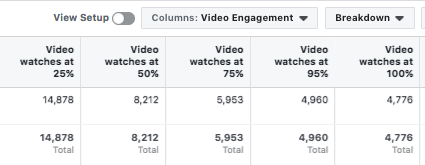
If you have done an analysis of your audience and discovered that your target audience is concentrated on Instagram, the idea of exploring the advertising opportunities that this social network can offer you has probably crossed your mind.
Since advertising arrived on Instagram in 2015, the social network has not stopped adding new formats with which to achieve your goals. In this post you will find a review of all of them, and the best recommendations to optimize your results in each one.
Before continuing, as we are going to talk about what types of campaigns each format is most interesting for, you may need to review the objectives that Facebook makes available to you and which we talked about in the post “How to set up ads on Facebook Ads from scratch”.
Now yes, let’s begin:
Photo ads
The classics: image plus caption (the text that accompanies your photos).
It can be used for all objectives, and if you add a URL, Facebook will give you the option to choose from all of its available CTAs.
Important: If you plan to include text in the image, make sure it does not exceed the text to image ratio indicated by Facebook standards (you can check this in the Facebook Creative Hub)
It is especially useful for driving traffic to your profile and getting new followers from your content.because you will be showing them what they can find in your feed and that will a priori help you build a more solid community. Top secret: This goal is only available on the mobile version of Instagram. If you try to set up a campaign with this objective from the Business Manager you will not find it.
If your goal is to achieve notoriety, we recommend not working from the reach objective but from brand awareness. At the speed we consume content on Instagram, it’s easy to be hit by an ad and barely pay attention to it, so you’ll ensure that Facebook distributes it to those users most likely to remember it.
There are all kinds of theories about the description of the image: the shorter the image, the greater the conversion, the longer the image, the greater the engagement. We talked about this in “Writing for Instagram: what does text mean in a visual network?”
Video ads
One more step in advertising on Instagram: instead of a photo we can use a video. It is especially useful for product demonstrations, concepts that are somewhat complicated to explain in a single photo, or stories.
Instagram allows you to advertise up to 60-second videos, but unless the story reflected is especially interesting, it is normal that more than 50% of those impacted do not consume even 25% of the video. That’s why, Make sure you tell the most important thing in the first 3 seconds. You will be able to know the number of people who view part or all of the video in the Video Engagement view of your Business Manager campaign dashboard.

According to Facebook, it is the format that generates the most memories, which makes them ideal for Awareness objectives. They are also especially interesting for generating custom audiences (you can do this from the Business Manager audiences tool) based on the users who were impacted by your video campaign, a very useful resource if you are going to launch conversion campaigns later.
Streaming ads
Or as you’re probably more familiar with: carousels. You will be able to upload several contents in the same publication through which the user will navigate by sliding their finger over them.
As was the case with the video, they will be of great help if you want to show different uses of your product, models, collections, or tell stories. They usually achieve very good conversion results, since they offer more information to users about our product or service without leaving the application.
Another highly recommended use of this format is as a dynamic ad, but this option will only be available if you have a product catalog on Facebook.
Instagram Stories Ads
Being so visual and full screen, they have proven to attract more attention and better optimize our investment. In fact, Over the last year this has been the type of advertising on Instagram in which on average the cheapest prices have been achieved.
In terms of possibilities for objectives and formats, it is very versatile: you can upload both videos and photos, and not just one of each, you can also set up successions of photos or videos (carousel) as advertisements. If you opt for this last option, pay special attention to the ratio between the number of people who consume the first video and the last. In addition, it is also available in the Instant Experience format (in the past, canvas), in which you can create a landing page without leaving the social network.
Careful: Facebook will allow you to display the same ad on both Instagram and Instagram Stories. If you choose this option you will not be able to choose a full screen creative, but rather the tool will make a (fairly regular) adaptation of the creative you have chosen for Instagram, in Instagram Stories. If what you want is to check the results in each of the channels, our tip is to create an ad set ad hoc for each one, with a piece that adapts to the specifications of the location to which it corresponds.
Within all Instagram formats, we would dare to say that it is the most recommended for traffic. If you select this objective (or if you decide to add a URL in any other), it will include a CTA at the bottom of the campaign in order to encourage the user to swipe up and reach your page. This CTA is quite discreet, so we advise you that when designing your stories, you include your own CTA to achieve greater effect.
As was the case in previous formats, You can use it to attract fans to your profile, but for now, only if you mount the campaign from your mobile.
And one last note: Stories are also not immune to Facebook’s text-to-image ratio restrictions, so if you don’t want Facebook to stop your ads, make sure you follow their rules.
Collection Ads
If you have a catalog on Facebook, you can also advertise on Instagram using this format. In this case, the creatives will be a main photo or video, accompanied by the product photos that you have uploaded to configure your collection. This makes it quite useful for generating awareness and giving context to a set of your brand’s products.
Once the user clicks on the publication, they will access your catalog, and when they are inside, by selecting one of the products that comprise it, Facebook will take them to your page. This involves one more click than if you set up a dynamic carousel of products, so if what you are looking for is conversion, we advise you to use this format before the collection format, as it is more direct.
Before finishing, remember: this is just a presentation of advertising formats on Instagram. The best thing you can do to find out which are the perfect combinations to go further is to test, test and test.
Source: https://www.40defiebre.com/publicidad-instagram


